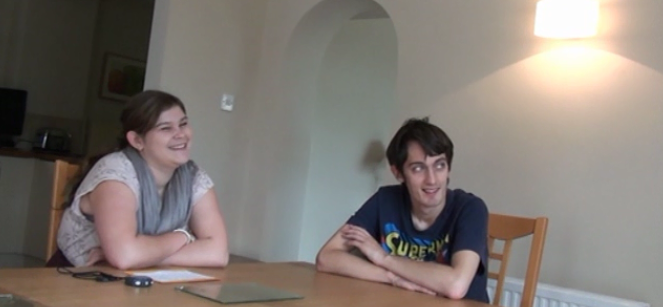Autism Spectrum Disorder in Fragile X Syndrome
What are the rates of Autism Spectrum Disorder in fragile X syndrome?
The link between fragile X syndrome and Autism Spectrum Disorder (ASD) is complex. A large number of studies have looked at the rates of ASD in boys and men with fragile X syndrome (full mutation) and the results have been inconsistent. Estimates of ASD range from 21-80%. This huge range is most likely due to differences in how data were collected across studies. A recent review of research studies suggests that the lower estimates may be more accurate. However, there is still a lot of debate among researchers and clinicians over prevalence rates of ASD.
What does fragile X syndrome have in common with ASD?
ASD is typically characterised by difficulties in social behaviour and communication. In addition, individuals with ASD typically have high levels of repetitive behaviour. Similarly to people with ASD, people with fragile X syndrome tend to show heightened levels of particular repetitive behaviours; for example, stereotyped behaviours and repetitive vocalisations and difficulties in social interaction and communication.
What differences are there between social behaviour/communicative behaviours in fragile X syndrome and ASD?
While there are similarities between fragile X syndrome and ASD, social behaviours (such as social smiling, showing a range of social expressions, quality of social overtures and sharing attention) and communicative abilities (gesturing, pointing and imitation) have been reported to be less impaired in individuals with fragile X syndrome than in individuals with autism spectrum disorder.
Avoiding making eye contact is seen in both fragile X syndrome and ASD but it is likely that this occurs in fragile X syndrome for different reasons than those described in ASD. For example, individuals with fragile X syndrome are more likely to show behaviours related to social anxiety and extreme shyness while still appearing as though they want to interact. This is a very different profile of social impairments to that seen in ASD, where individuals are more socially avoidant, withdrawn and do not show motivation to interact with others.
Overall, it has been argued that while there are some similarities between fragile X syndrome and autism spectrum disorder, other aspects of fragile X syndrome are qualitatively different. Some researchers have noted that a ‘mild’ presentation of ASD is more common in fragile X syndrome than severe ASD. These differences are important to consider when developing interventions to support people with fragile X syndrome.
Are some people with fragile X syndrome more likely to show characteristics of ASD?
There are many factors that are likely to increase the likelihood that a person with FXS might show ASD behaviours. Research has shown that people with lower adaptive (daily living) skills, verbal ability and IQ are more likely to develop these behaviours than those who are more able in these areas. However, research is still ongoing to look at all the possible factors that may be related to the presence of ASD characteristics in fragile X syndrome. It is important to remember that if an individual has characteristics that are related to an increased chance of ASD behaviours, they still may not show ASD behaviours. Equally, if an individual with fragile X syndrome shows ASD behaviour they may not show the associated factors mentioned here.
Changes with age
There is some evidence that, for some individuals, Autism characteristics in fragile X syndrome become less severe with age. However, this is based on a very small number of studies and the changes were only slight. One study showed that 13% of individuals with FXS who previously had a dual diagnosis of autism, no longer met the criteria for a diagnosis when they got older. The main areas where improvements were reported were gestures and social skills.
Despite this, other studies have found a different pattern with increased severity of social-emotional difficulties with age. Much more research into changes with age needs to be conducted.
To read more about changes with age in fragile X click here.
ASD in females with fragile X syndrome
The estimates of ASD in females with fragile X syndrome is between 1-6%. To date, there is little research on ASD in females so we do not know whether the profile of ASD characteristics in females looks the same as in individuals with autism spectrum disorder.
Parents and carers may also find the following links useful:
Fragile X syndrome and autism: Similar but different




